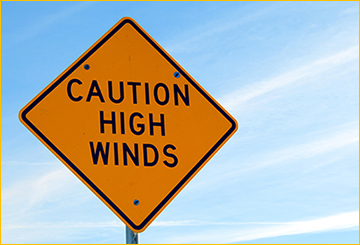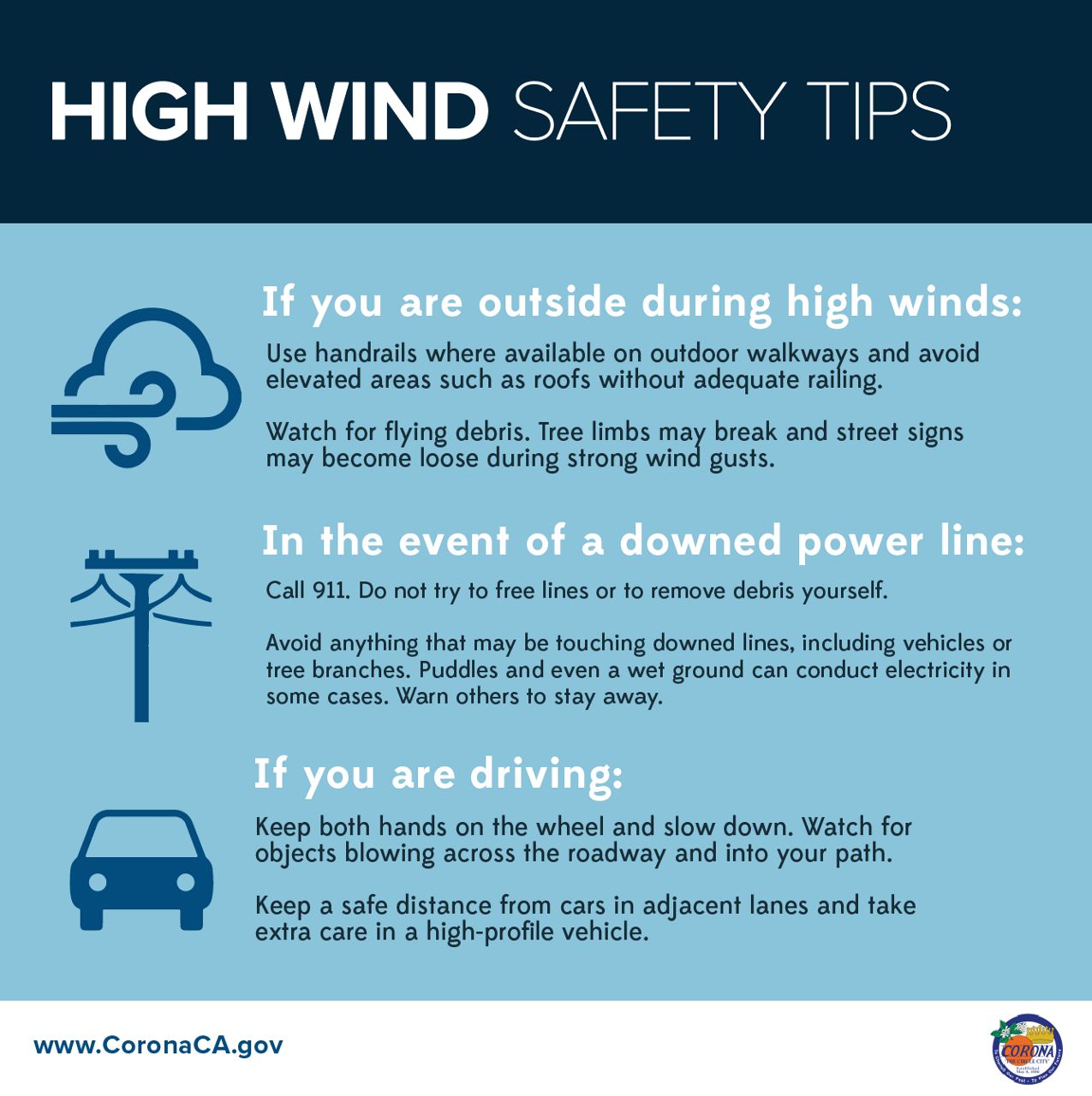In the midst of a blustery day, finding a way to navigate through the wind can often be a challenge. Whether you’re an avid golfer, a sailor, or simply trying to enjoy a leisurely walk outdoors, adjusting your strategy to conquer windy conditions is crucial. From understanding the effects of wind on your movement to making tactical decisions, this article will provide you with helpful tips and techniques to enhance your performance in even the gustiest of conditions. So, brace yourself and get ready to take on the wind with confidence!

Choosing the Right Equipment
Selecting the Right Golf Ball
When it comes to playing golf in windy conditions, choosing the right golf ball can make a significant difference in your game. Opting for a ball with a lower spin rate can help prevent excessive spin that can be unpredictable in windy conditions. Look for golf balls that are specifically designed for windy conditions, as they often have a more durable cover that can withstand the elements and maintain their performance.
Choosing the Right Club
In windy conditions, it’s crucial to select the right club to adapt to the changing dynamics of the game. Consider using clubs with higher lofts, as these can help generate more backspin and keep the ball lower, reducing the impact of the wind. Additionally, clubs with wider soles can provide more stability and prevent the clubhead from twisting off course in gusty winds.
Considering Wing Designs in Sailing
Sailing enthusiasts understand the importance of selecting the right wing design for windy conditions. When choosing a sail, consider designs that promote stability and control. Sail designs with a more pronounced curve, known as a camber, can generate lift and help maintain control in gusty winds. Additionally, sails with a larger surface area can harness the power of the wind more effectively, allowing for better acceleration and maneuverability.
Understanding Wind Patterns
Identifying Wind Direction and Strength
To adapt your strategy in windy conditions, you must first understand the wind’s direction and strength. Pay attention to the movement of trees, flags, or any other visual indicators that can help you determine the wind direction. Feeling the wind on your skin can also provide valuable information. Additionally, consider using a wind gauge or smartphone applications that can accurately measure wind speed and provide real-time data.
Analyzing Local Topography
The local topography plays a significant role in shaping wind patterns, especially in outdoor activities like golf and running. Observe the surrounding terrain for any natural features, such as hills or valleys, that can create wind channels or influence wind direction. These features can impact wind strength and direction, requiring adjustments in your strategy to accommodate the changing conditions.
Recognizing Microclimates
Within a larger area, there are often microclimates that can vary in wind conditions. These microclimates can be caused by nearby structures, such as buildings or trees, which create turbulence or shelter from the wind. Identifying these microclimates can help you strategize by taking advantage of protected areas to minimize the impact of strong winds or seeking out more favorable wind conditions for activities like sailing or fishing.
Adjusting Technique and Form
Modifying Golf Swing in Golf
In windy conditions, modifying your golf swing is essential to maintain accuracy and distance. Focus on keeping your swing compact and controlled to minimize the impact of the wind. Shortening your backswing can help you maintain balance and prevent the clubhead from being swept off course. Additionally, grip the club firmly to maintain control and reduce the chances of it twisting in your hands.
Altering Shot Angles in Tennis
When playing tennis in windy conditions, adjusting your shot angles can dramatically affect the outcome of the game. Instead of hitting the ball with a flat trajectory, aim for higher shots with more topspin. This will allow the ball to descend more steeply, making it less susceptible to wind drift. Furthermore, consider hitting shots closer to the lines rather than down the center of the court, as the wind can push the ball away from its intended target.
Changing Serve Techniques in Tennis
The serve is a crucial aspect of tennis, and in windy conditions, it requires adaptation. To maintain control and accuracy, consider adopting a more conservative serve technique, focusing on placement and spin rather than power. Opt for a slice or kick serve, as these spins can help counteract the effects of the wind and keep the ball in play. Adjusting your toss, aiming slightly into the wind, can also provide better ball control during the serve.
Tactics for Outdoors Activities
Optimizing Running Route
In windy conditions, runners can optimize their route to minimize the impact of headwinds or crosswinds. Consider starting with a headwind to maximize energy conservation for the later parts of the run when fatigue sets in. When faced with strong crosswinds, plan a route that takes advantage of natural windbreaks, such as buildings or tree-lined areas, to reduce resistance and maintain running pace.
Adjusting Cycling Technique
Cyclists face unique challenges when riding in windy conditions. To adjust your technique, position your body lower on the bike to reduce wind resistance. Focus on maintaining a steady cadence and avoid sudden changes in speed or direction that can be destabilizing in gusty winds. Additionally, learn how to ride in a staggered formation with other cyclists, as this can help minimize the impact of crosswinds and optimize drafting for energy conservation.
Adapting to Wind in Fishing
When fishing in windy conditions, adapting your technique is crucial. Reel in your line slightly faster to compensate for any additional drag caused by the wind. Consider using heavier lures or sinkers to help your bait stay in place and reach the desired depth despite the wind-driven surface currents. Additionally, casting against the wind can provide better accuracy, as the wind can help carry your bait to your target location.

Strategies for Team Sports
Adapting Passing and Shooting in Soccer
In windy conditions, passing and shooting in soccer require adjustments to maintain precision and effectiveness. For passing, reduce the amount of loft on your passes and aim for low, driven balls to counter the effects of gusty winds. When shooting, consider aiming slightly wider or higher than usual, as the wind can affect the trajectory of the ball. Additionally, communicate with your teammates to adjust the intensity and strength of passes based on the wind conditions.
Modifying Throws in Ultimate Frisbee
Ultimate Frisbee players must adapt their throwing techniques in windy conditions. In moderate to strong headwinds, throwing with a slight downward angle can help maintain stability and control. Alternatively, in tailwinds, consider throwing more vertical throws to maximize distance. Adjusting the spin on the disc can also counteract the wind, with more backspin providing better stability against gusts and less spin reducing the impact of crosswinds.
Altering Ball Control in Field Hockey
Field hockey players can modify their ball control techniques to account for windy conditions. When dribbling, stay low to maintain stability and minimize the impact of the wind. Opt for quick and decisive passes rather than long aerial passes that can be easily affected by gusts. Additionally, consider adjusting the angle of your stick when receiving or intercepting a pass to counteract any wind-induced deflection.
Sailing in Windy Conditions
Trimming Sails to Wind Angle
When sailing in windy conditions, proper sail trimming is vital to optimize performance and maintain control. Adjust the sails to match the wind’s angle, known as pointing, to maximize forward propulsion. Experiment with different sail tensions and positions to find the optimum setting that balances power with stability. Aim to keep the sails full but without excessive movement, as this can result in loss of control or stalling.
Adjusting Sail Size and Configuration
Choosing the right sail size and configuration is crucial when sailing in windy conditions. Consider using a smaller sail or reefing, which involves reducing the sail’s area, to maintain balance and control in stronger winds. Reefing helps to reduce the heeling angle of the boat and prevent excessive strain on the rigging. Adjusting the shape of the sails, known as camber, can also help maintain airflow and maximize efficiency.
Anticipating and Reacting to Gusts
In windy sailing conditions, gusts can pose a significant challenge and require quick reactions. Keep a keen eye on the water’s surface for indications of gusts, such as ripples or changes in color. When a gust is approaching, be prepared to adjust your sail trim and body position to counteract the sudden increase in wind pressure. Anticipating gusts and making timely adjustments will help maintain control and prevent the boat from being overwhelmed by the wind.
Driving Techniques in Windy Conditions
Maintaining Vehicle Control
When driving in windy conditions, maintaining control of your vehicle is of utmost importance. Keep both hands on the wheel and maintain a firm grip, especially in gusty winds. Pay attention to any changes in the vehicle’s handling or responsiveness, as sudden shifts in wind direction can affect stability. If you encounter strong crosswinds, gently adjust your steering to counter the wind’s force while keeping the vehicle within your lane.
Adjusting Speed and Following Distance
In windy conditions, adjusting your speed can help ensure your safety on the road. Reduce your speed to account for the increased braking distances caused by gusts or sudden changes in wind strength. Additionally, increase your following distance to allow for a longer reaction time in case of sudden wind-related obstacles or road debris. Giving yourself ample space between vehicles can help you better control your vehicle and react to changing wind conditions.
Avoiding Crosswinds on Bridges
Crosswinds on bridges can pose a unique challenge for drivers. When approaching a bridge, be prepared for potentially stronger winds due to the lack of obstructions. Reduce your speed and avoid sudden lane changes to minimize the effects of crosswinds. Keep a steady and controlled grip on the steering wheel and be vigilant for any side gusts that can momentarily push your vehicle off-course.
Camping and Outdoor Tips
Choosing Sheltered Camping Spots
When camping in windy conditions, choosing a sheltered camping spot can improve your overall experience. Look for areas protected by natural barriers, such as trees or rock formations, that can help reduce wind speed and turbulence. Avoid setting up your tent in exposed open fields or on elevated positions where gusts can be stronger. By selecting a sheltered campsite, you can enhance your comfort and safeguard your equipment from potential wind damage.
Securing Tents and Equipment
In windy camping conditions, properly securing your tent and equipment is essential. Use strong tent stakes or anchors designed for windy conditions to secure your tent firmly to the ground. Attach guylines to the tent and ensure they are taut to prevent the wind from flapping or collapsing the tent. Additionally, secure loose items and equipment by tying them down or storing them in secure containers to prevent them from being blown away.
Preparing for Windborne Debris
Wind can carry debris and pose a potential hazard while camping. Be aware of loose branches, flying objects, or loose equipment that may be propelled by the wind. Position your campsite away from tall trees or areas with loose debris that might pose a risk. Store camping gear, food, and personal belongings in a secure location to prevent them from becoming windborne projectiles. Always prioritize your safety and take necessary precautions to avoid wind-related injuries.

Gardening and Landscaping Strategies
Selecting Wind-Resistant Plants
When it comes to gardening and landscaping in windy areas, selecting wind-resistant plants is crucial. Choose plants known for their ability to withstand strong winds without breaking or suffering significant damage. Look for plants with flexible stems or leaves that can bend and sway with the wind. Trees and shrubs with a more compact growth habit or smaller leaves are often better equipped to withstand windy conditions.
Implementing Windbreaks
In areas exposed to strong winds, implementing windbreaks can significantly impact the success of your garden or landscape. Planting dense hedgerows or erecting fences can create barriers that redirect or reduce wind speed. Position windbreaks strategically, taking into account the prevailing wind direction and the desired area you want to protect. Combining different types of windbreaks, such as trees and structures, can provide a more effective defense against windy conditions.
Watering Techniques in Windy Conditions
Watering plants efficiently in windy conditions requires special attention. Strong winds can accelerate evaporation rates, leading to faster drying of the soil. To optimize your watering efforts, time your watering sessions early in the day or in the evening when wind speeds tend to be lower. Adjust the water volume based on the wind intensity to ensure adequate penetration without excessive runoff or wastage. Consider using moisture-retaining mulch to reduce water loss and provide insulation to the soil.
Safety Precautions
Being Aware of Flying Objects
In windy conditions, it’s essential to be aware of potential flying objects that can pose a risk to your safety. Keep an eye out for loose debris, tree branches, or any unsecured items that may become windborne projectiles. Stay clear of construction sites or areas where the risk of wind-related flying objects is higher. Always prioritize your safety and take shelter or seek appropriate protection if you notice any imminent danger.
Protecting Against Wind-Related Injuries
When participating in outdoor activities or sports in windy conditions, protecting yourself against wind-related injuries is crucial. Wear appropriate gear, such as helmets, goggles, or protective clothing, to safeguard against wind-driven debris or potential falls. Use sunscreen to protect your skin from windburn and minimize its drying effects. Stay hydrated by drinking plenty of water to counteract the dehydrating effects of wind and ensure proper bodily function.
Forecasting Severe Wind Conditions
Keeping track of weather forecasts is essential to prepare and adjust your strategy in severe wind conditions. Pay attention to meteorological warnings or advisories regarding strong winds. Stay informed about wind gust speeds, wind directions, and any anticipated weather changes that can affect your chosen outdoor activity. Being well-informed allows you to make better decisions and take appropriate precautions to ensure your safety and the success of your endeavors in windy conditions.
In conclusion, adjusting your strategy in windy conditions is crucial across various activities and sports. By understanding the impact of wind on equipment, modifying techniques according to wind patterns, and implementing appropriate tactics, you can enhance your performance, safety, and overall experience. Whether you are playing golf, sailing, driving, camping, or gardening, adapting to windy conditions empowers you to make the most out of every situation while minimizing risks and maximizing enjoyment. So embrace the wind, adjust your approach, and let the friendly breeze be a catalyst for your success!








